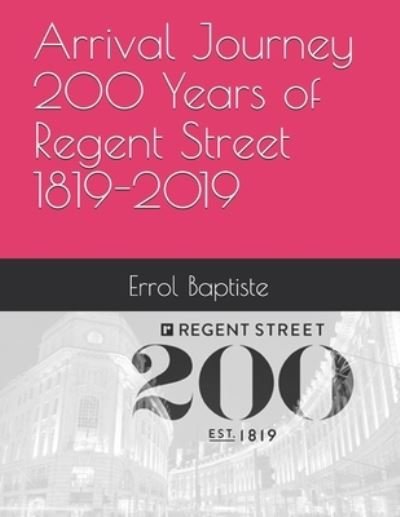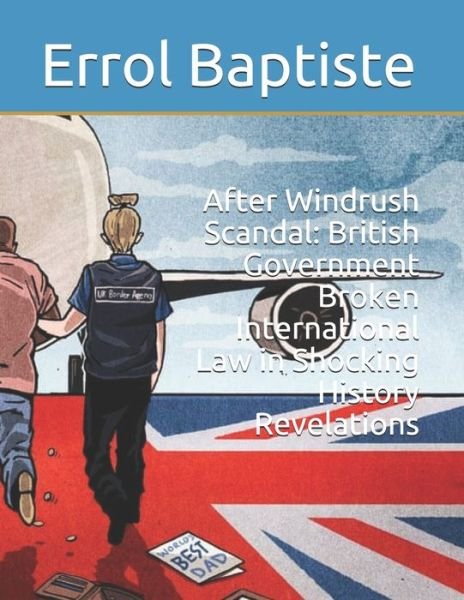
Tell your friends about this item:
My Story Invention on the Great Fire of London Trail Game
Errol Baptiste
My Story Invention on the Great Fire of London Trail Game
Errol Baptiste
My Story Invention on the Great Fire of London Trail Game The invention on the Great Fire of London Trail Game came to me as a new novel idea can be added to the future innovation of connecting London's past heritage and history. The introduction of a mobile app trail game occurred after visiting the exhibitions, special events plus walks and tours that includes completing the trail walk from Thames Path to the Museum of London in 2016. The future aim was to promote the local, national and international of London to a 21st Century audience. Previously the 300th Anniversary on the Great Fire of London that took place in 1966 there was no mention of creating good opportunities that includes the future legacy by connecting London's past heritage and history in the mid 20th Century. It was 50 years later in 2016 I have come up with the future innovation of creating unique opportunities on the invention of the Great Fire of London Mobile App Trail Game shall be added to the link of its past heritage and history in the 21st Century. This is a very important milestone of adding the mobile app trail game as a very good opportunity and future legacy to remember the Great Fire of London that took place over 350 years ago on September 2, 1666. In addition the future innovation on the Great Fire of London Trail Game will connect to the destruction left by the most famous fire in history which is very unique to tourists visiting London for its past heritage and history. The City of London was the centre of commerce and trade in England of 1666. The Thames would be bustling with boats and commercial trade. London Bridge was the only bridge across the River Thames for 63 years until 1729. In 1666, London Bridge was crowded with houses, meaning it was too narrow to be a good escape from the fire. St. Magnus the Martyr on Lower Thames Street, next to the River Thames near a major crossroads onto the city and this church was a key storage for firefighting equipment. The church was destroyed on the first night of the blaze. The Great Fire of London started on Pudding Lane on Sunday September 2, 1666 leaving sparks to set light to spare fuel and flour. The Monument was built to commemorate the Great Fire that took place in 1666 standing at 202 feet high also exactly where the fire started in Pudding Lane. The Great Fire didn't spread to Leadenhall Market due to its stone construction it has been a market site since the 14th Century. St. Michael's Alley which is very crowded with narrow alleyways. In 1666, most city streets were narrow as the alleyways. During the fire, they would be full of people and carts, making it very difficult for the firefighters to get through. The Royal Exchange was built by Sir Thomas Gresham, a merchant and financier as a trading floor in 1565 used to trade teas, herbs and spices for 101 years and it was destroyed in the Great Fire of London on September 3, 1666 home to many of the City's previous bankers. Mansion House also the home of Sir Thomas Bloodworth, the Lord Mayor of the City of London in 1666, became a scapegoat for the Great Fire because of his indecisive nature to take necessary actions. He was forced to resign when King Charles the 2nd ordered the demolition of houses, which could only be achieved with gunpowder because the fire was advancing faster than the houses could be demolished. Guildhall is the only secular stone building dating before 1666 still standing in the City to this day. Guildhall Library is one of the City of London's major research libraries also got unrivalled resources on the history on the Great Fire. The Insurance Hall which is home to the Worshipful Company of Insurers also the world's first insurance companies started in 1667 one year after the Great Fire of London. St. Mary-le-Bow Church was destroyed in the Great Fire and was rebuilt from 1671 to 1673. St. Paul's Cathedral was destroyed on September 4, 1666 and was rebuilt 44 years later in 1710 by Sir Christopher Wren.
| Media | Books Paperback Book (Book with soft cover and glued back) |
| Released | January 16, 2018 |
| ISBN13 | 9781976905667 |
| Publishers | Independently Published |
| Pages | 50 |
| Dimensions | 129 × 198 × 3 mm · 58 g |
| Language | English |










